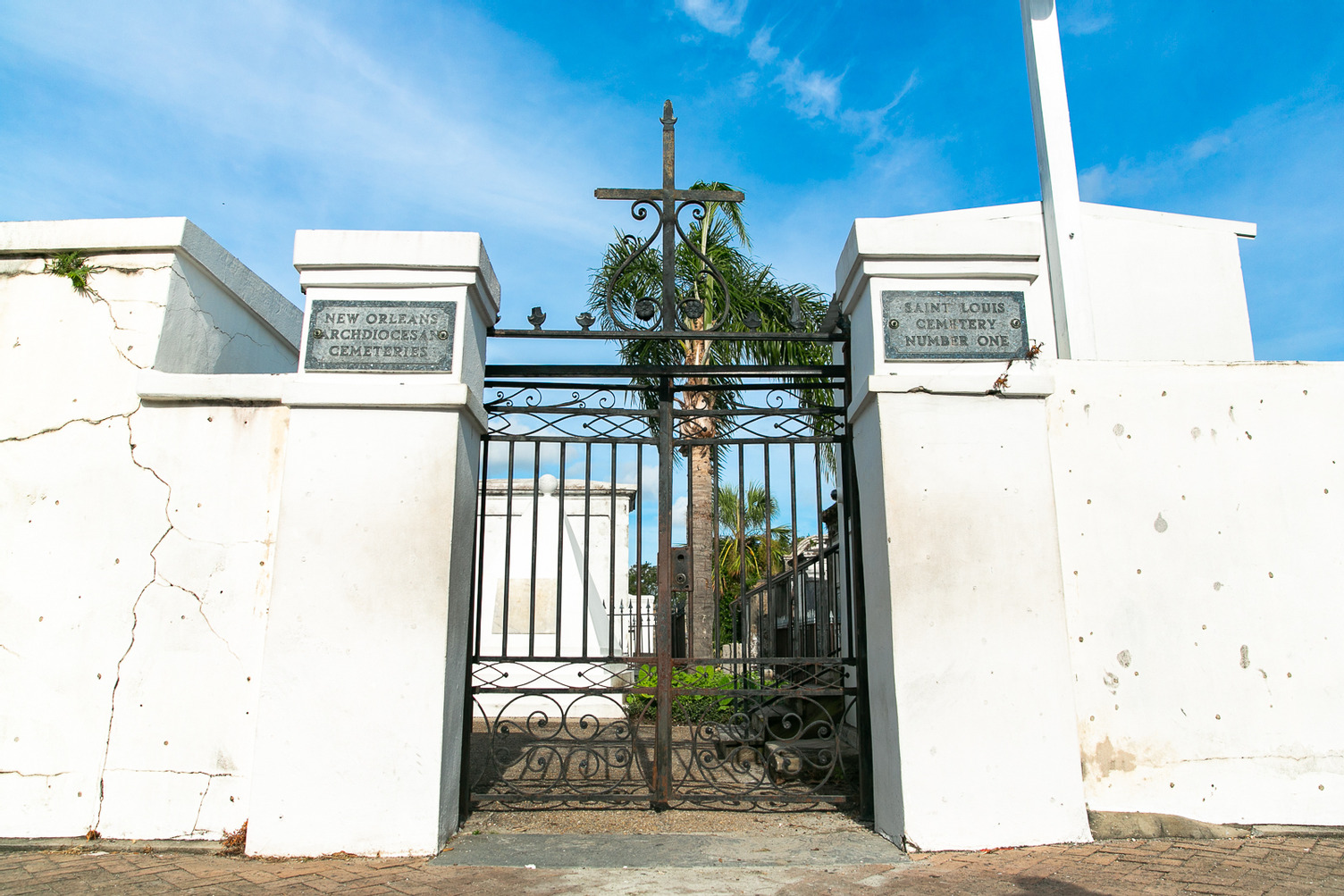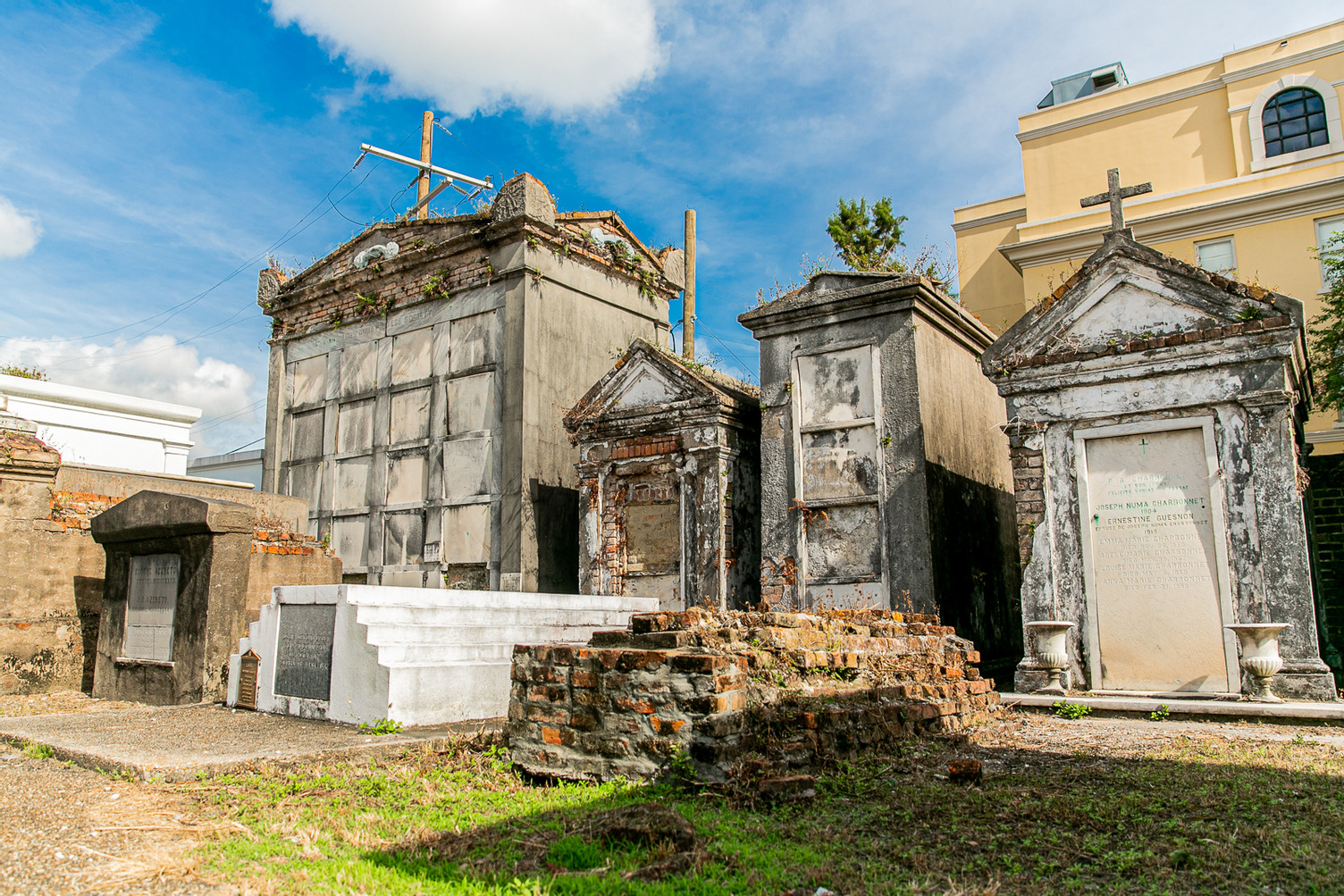.png)
 When Mark Twain wrote Life on the Mississippi, he reflected on his visit to one of New Orleans’ above-ground cemeteries. He painted a picture of the rows of crypts, standing like stately mansions, along the cemetery’s maze of narrow lanes and walkways. “When one moves through the midst of a thousand or so of them and sees their white roofs and gables stretching in the distance on every hand,” he penned, “the phrase ‘city of the dead’ has all at once a meaning to him.”
When Mark Twain wrote Life on the Mississippi, he reflected on his visit to one of New Orleans’ above-ground cemeteries. He painted a picture of the rows of crypts, standing like stately mansions, along the cemetery’s maze of narrow lanes and walkways. “When one moves through the midst of a thousand or so of them and sees their white roofs and gables stretching in the distance on every hand,” he penned, “the phrase ‘city of the dead’ has all at once a meaning to him.”
You, too, can meander through a city of the dead in New Orleans and follow in Mark Twain’s footsteps. But to pass through the St. Louis Cemetery No. 1’s gates while you’re still alive, you’ll need to join guided tour by Cemetery Tours New Orleans. It offers the only official walking tour of this historic landmark.
Once inside the high pearly white walls, a city in miniature stretches out before you. There are seemingly no two “houses” alike in St. Louis Cemetery No. 1. Established in 1789, the city’s oldest and most famous burial place contains over 700 above-ground crypts, sarcophagi, and society temples. There’s even a pyramid. Not yet touched by the patina of time, Nicolas Cage’s stark white tomb-in-waiting stands in sharp contrast to its aged neighbors. Nevertheless, this new tomb mingles with the old, just as vaults and mausoleums of different sizes, shapes, architecture, and embellishments create a pleasing mosaic.
Legendary New Orleanians from all walks of life add to the graveyard’s diversity, as well. As you navigate the maze of passageways and admire the elaborate tombs, your experienced guide will introduce you to some of the Crescent City’s most famous—and infamous—men and women. Perhaps the most well-known resident laid to rest here is Marie Laveau, the Voodoo Queen of New Orleans. While Laveau has gained fame after death, her life is largely cloaked in mystery. One thing is certain, though. The devotees who etched XXXs on her tomb believe in her healing powers and interventions from beyond the grave.
You’ll also meet Paul Morphy, a chess prodigy known for his aggressive strategies. During his brief career in the 1850s, he was said to be the greatest chess master in the world. And you’ll see Homer Plessy’s tomb. As a ‘free man of color,’ Mr. Plessy took a stand against segregation by taking a seat in a whites’ only train car in the 1890s. He’s recognized as one of the earliest civil rights’ advocates for Black Americans.
Throughout the tour, your host will give voice to the dead and share their stories of intrigue, ingenuity, bravery, and patriotism. You’ll hear riveting tales of war heroes and politicians, artists and rogues, inventors and educators, who rest in family vaults with their loved ones.
Along with family vaults, the cemetery’s landscape is dotted with larger mausoleums. Many who shared a common heritage or occupation, rest in society temples together. In a city where jazz funeral processions or “second lines” accompany the deceased to their final resting places, it’s particularly fitting that those musicians who once honored New Orleans’ dead are honored with their own society temple. The Musicians’ Tomb allows those bonded in life by music to be bonded in death.
Given the cemetery’s historic, cultural, and architectural significance, as well as the distinguished men and women laid to rest here, St. Louis Cemetery No. 1 is on both the National Register of Historic Places and the Louisiana African American Heritage Trail. To book your walking tour, please visit the official website for Cemetery Tours NOLA.